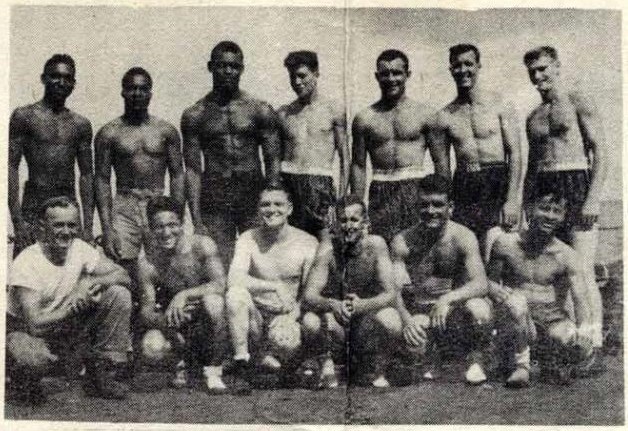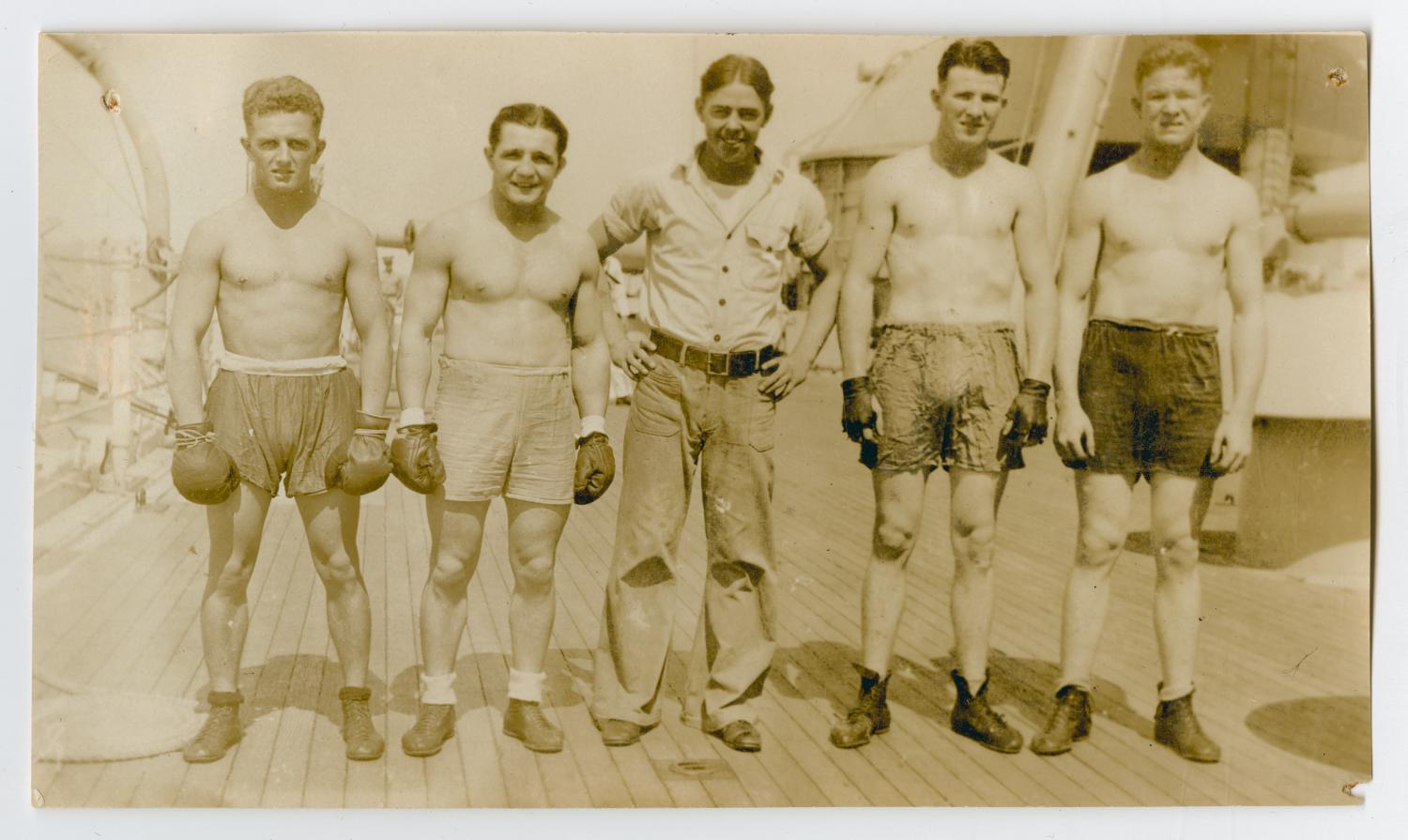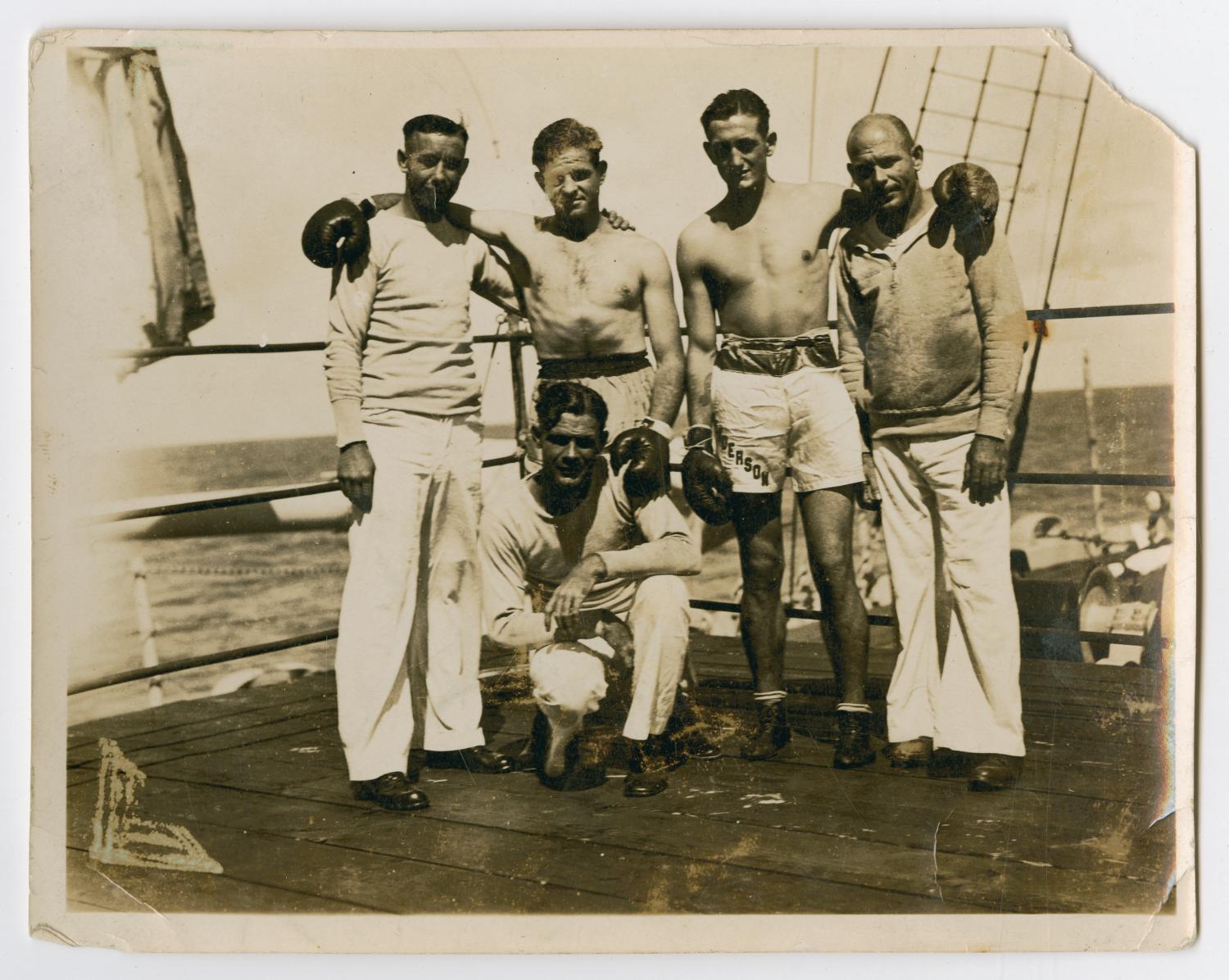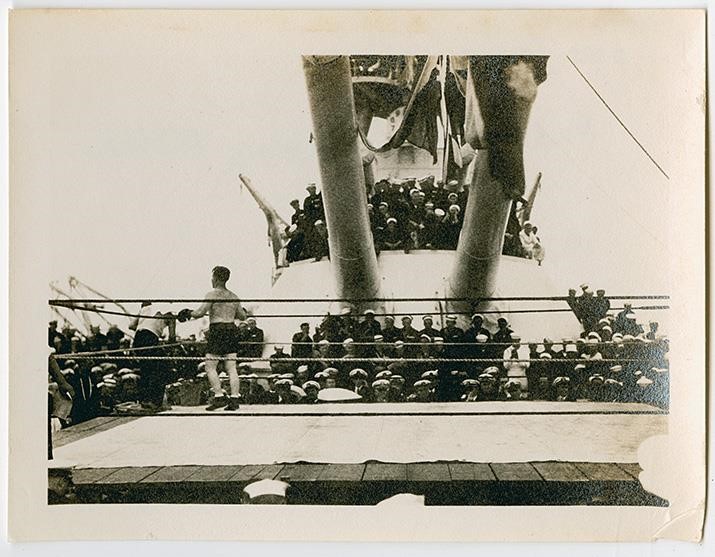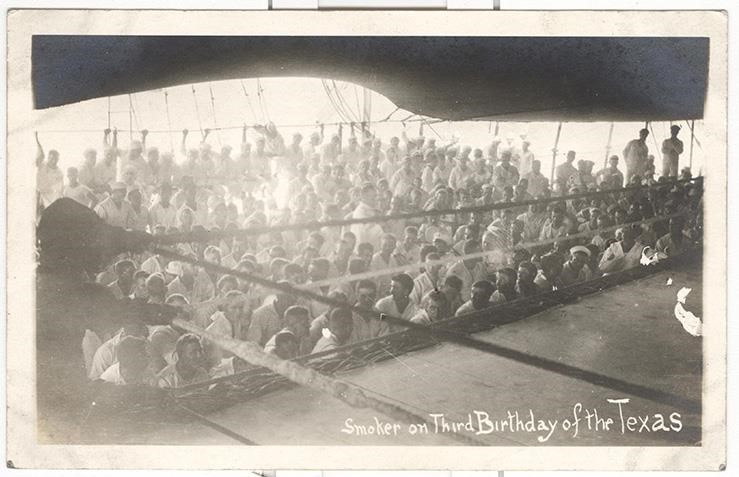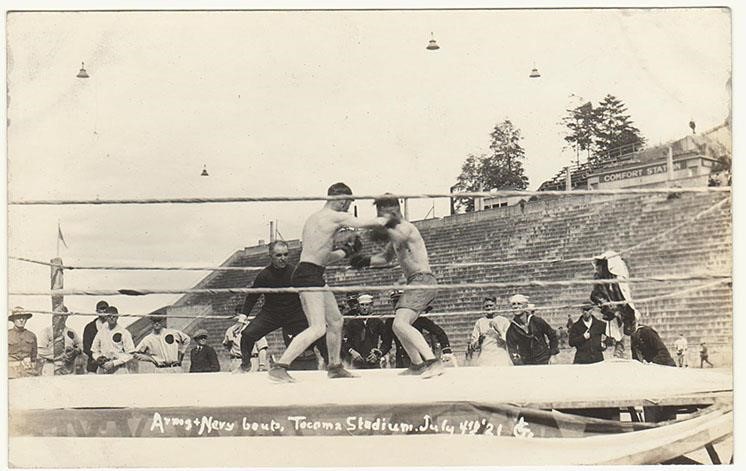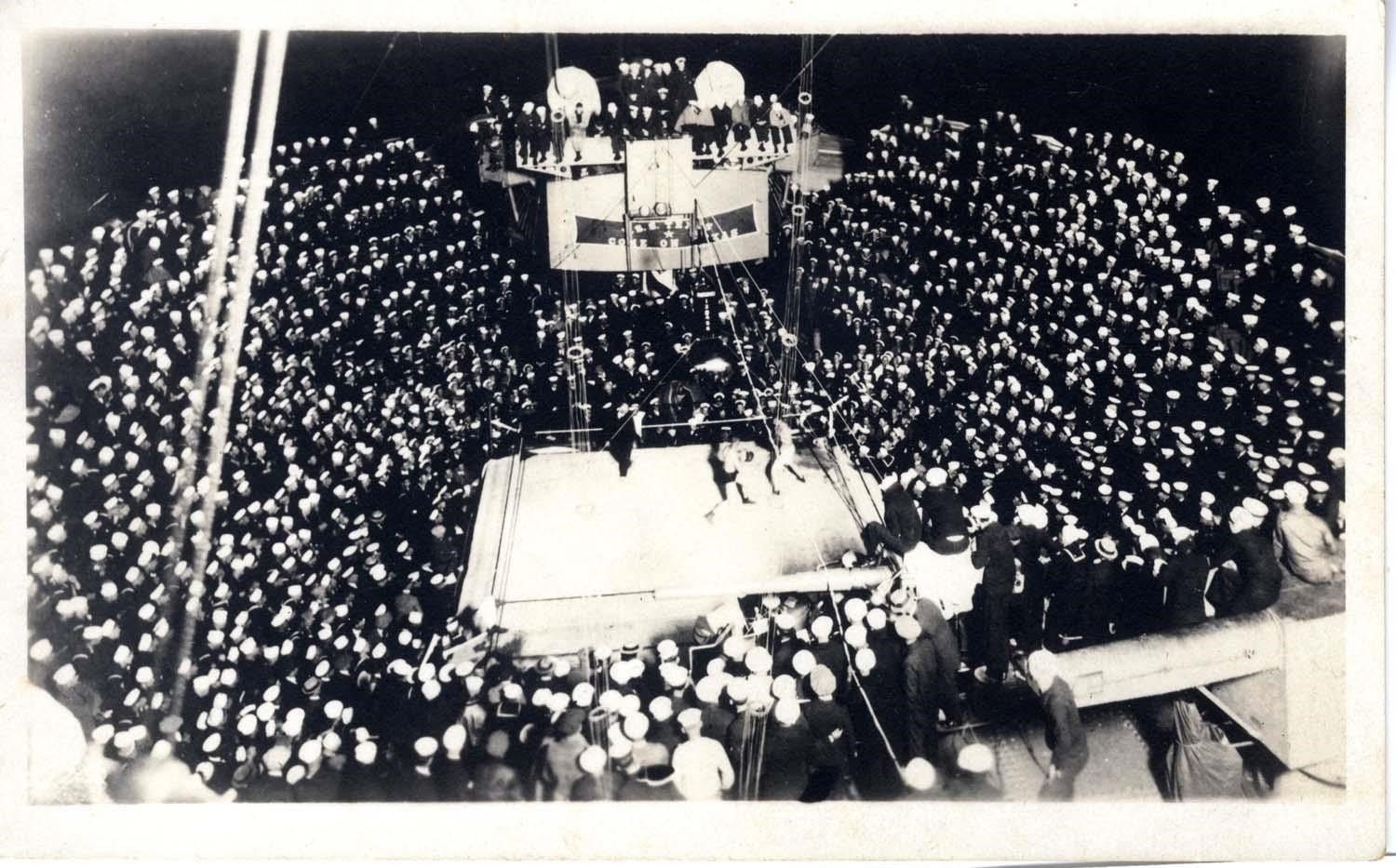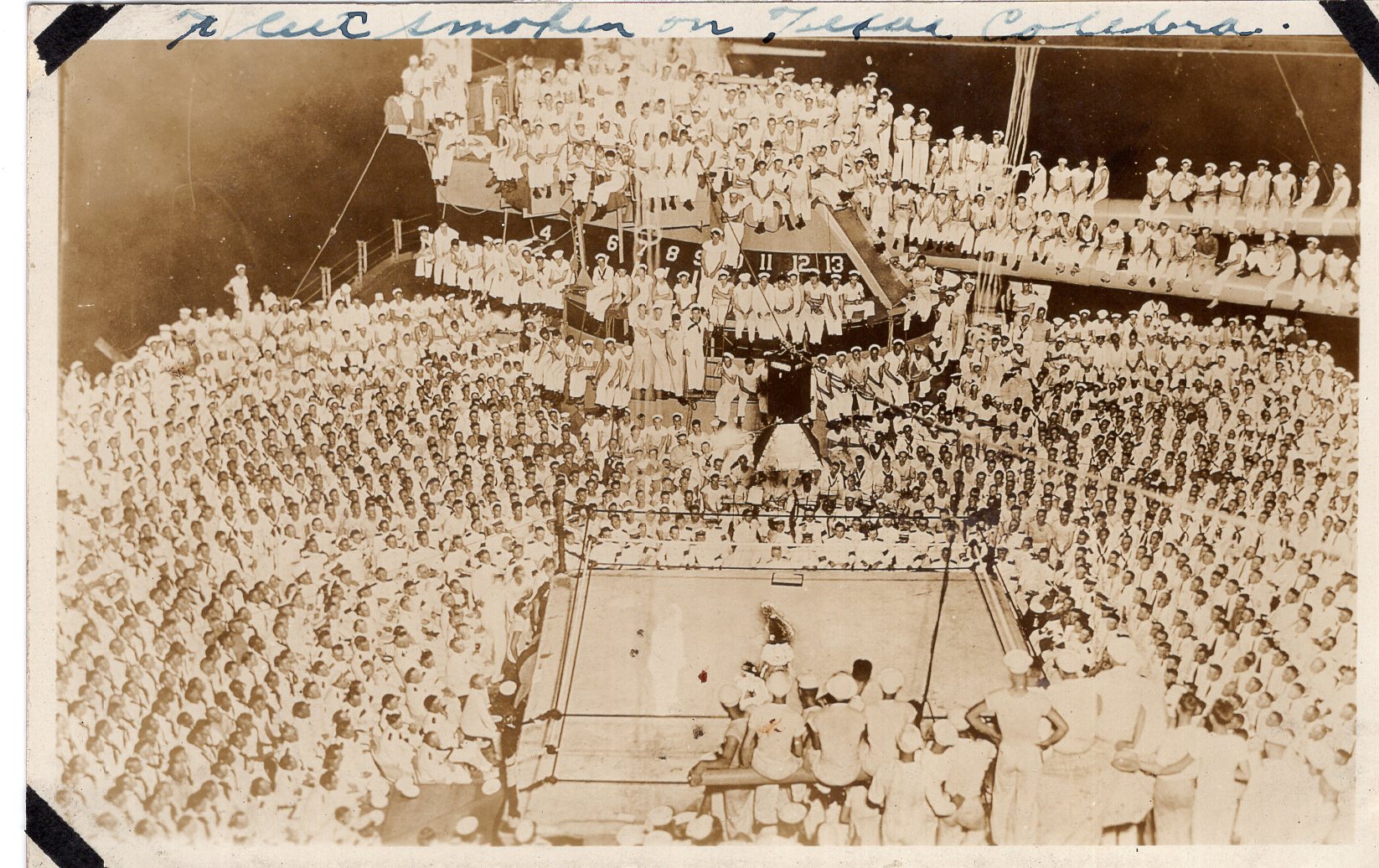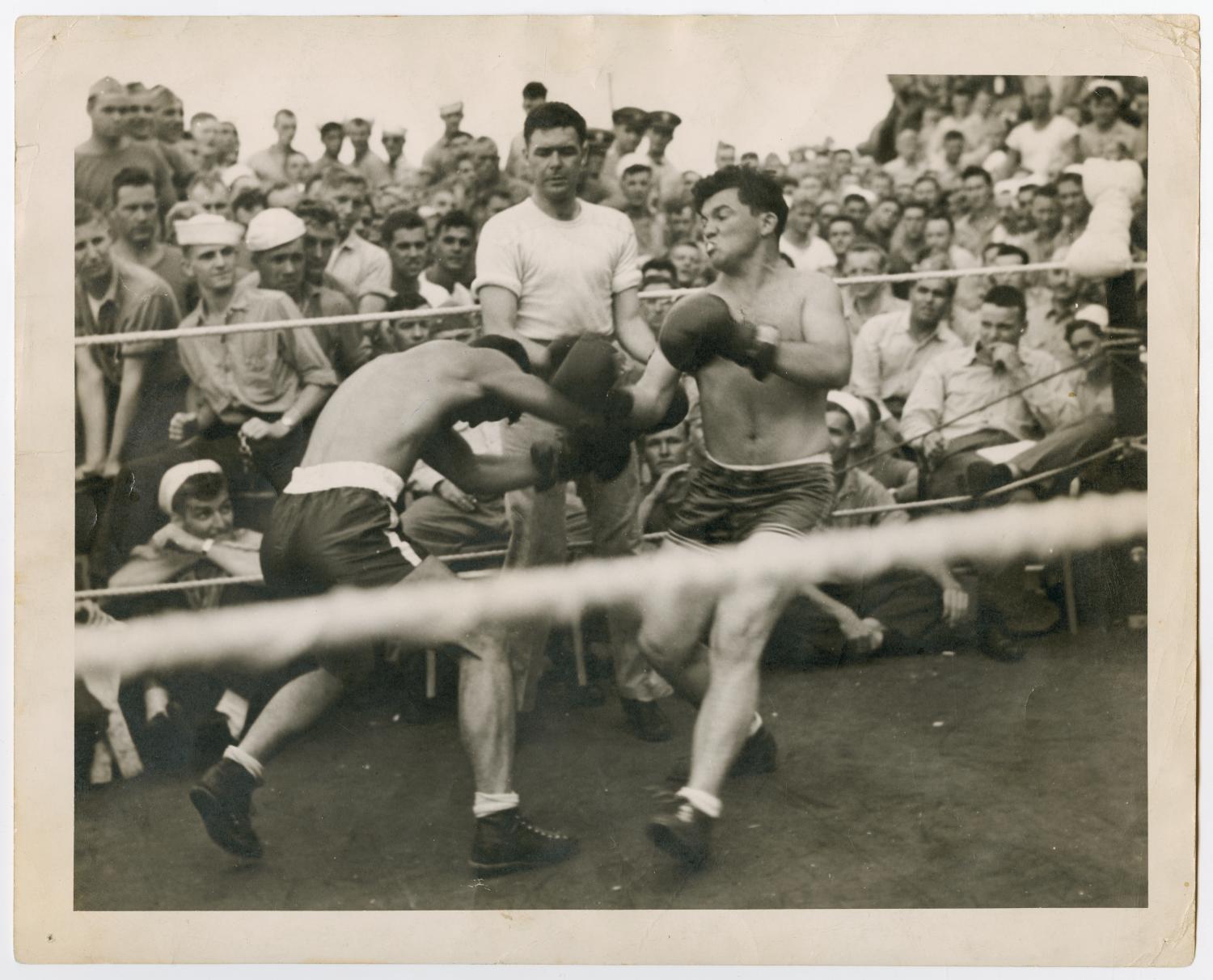Crew Life: Boxing
Posted by Gabe Shuffield on July 22, 2025
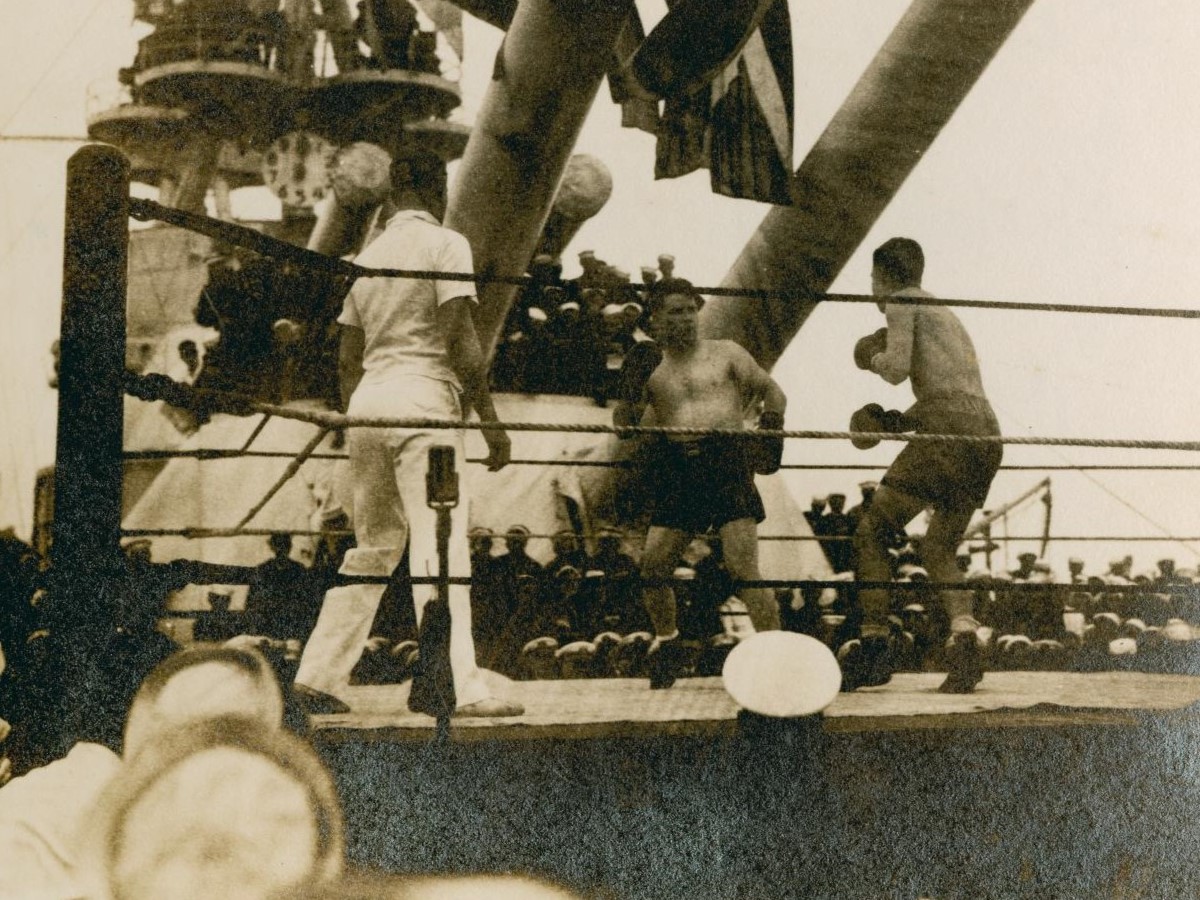
Sports were a huge part of life on Battleship Texas – in 1917, over half of the crew was participating in at least one sport. Texas had many team sports, including baseball, football, and basketball, but individual sports like boxing and wrestling were also popular. Boxing events – called “smokers” – were commonplace during Battleship Texas’s service. Whenever two or more ships were together, one ship’s boxers might issue a challenge. Officers would be selected to serve as the judges and the referee, and a ring would be set up on one of the ships or sometimes on shore. Larger ships, like battleships, usually had a printing press aboard, and the printers would get to work publishing the program. Some smokers were simple affairs and only had a few matches, but ships could go all-out with matches for every weight class, musical performances, wrestling, and food and drink.
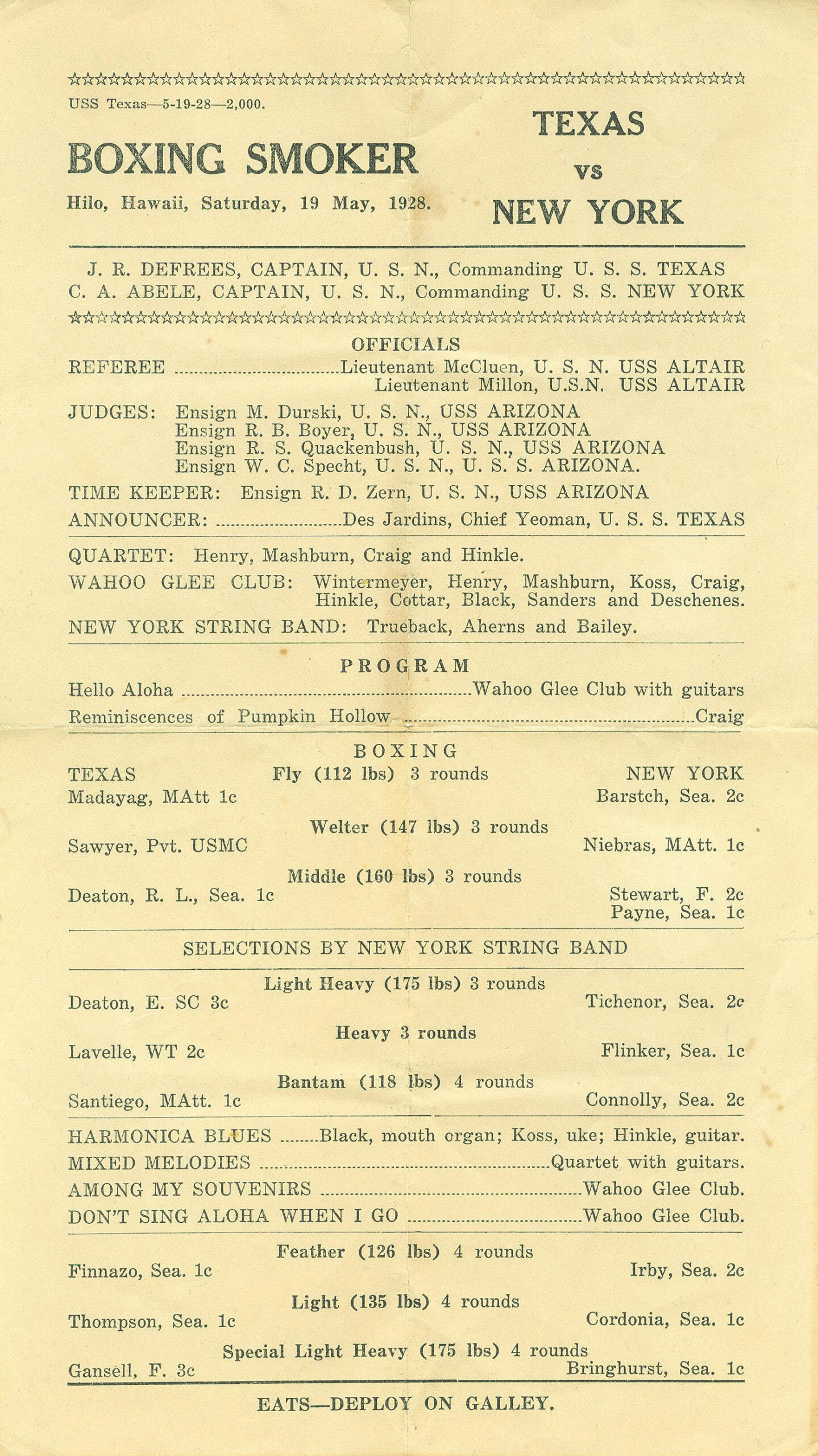
At the beginning of USS Texas’s service in 1914, it was up to ships and their crews to organize smokers and other sporting events. Fleets and divisions (smaller units of ships organized within a fleet) had begun tracking standings and holding championship matches unofficially. Eventually, the fleet champions would earn prestigious championship belts to go with their titles. In 1921, the first annual All-Navy boxing championship was held in Balboa, Panama for the fleet champions. These events and titles were still unofficial, but a concerted effort was being made across the Navy to support and facilitate them. Over the years, the All-Navy championships included other events, such as wrestling and team sports, and the All-Navy championships were held nearly every year until the US entered World War II.
Even during wartime, sailors found the time for boxing. Arthur Denault, coxswain, boxed regularly under the name “Johnny Moran” while he served on USS Texas from 1915 to 1918. He boxed in smokers from Guantanamo Bay, Cuba to Scapa Flow, Scotland and competed frequently in exhibition matches on shore in Brooklyn, New York against both Navy and civilian boxers. Denault won the lightweight Atlantic Fleet Champion title in November 1917 in a match against Joe Kelly of USS Wyoming in Brooklyn, two months before USS Texas crossed the Atlantic to join the British Grand Fleet for World War I. While in British waters in 1918, Denault represented the US Navy against the British Royal Navy in an Anglo-American smoker held on USS New York.
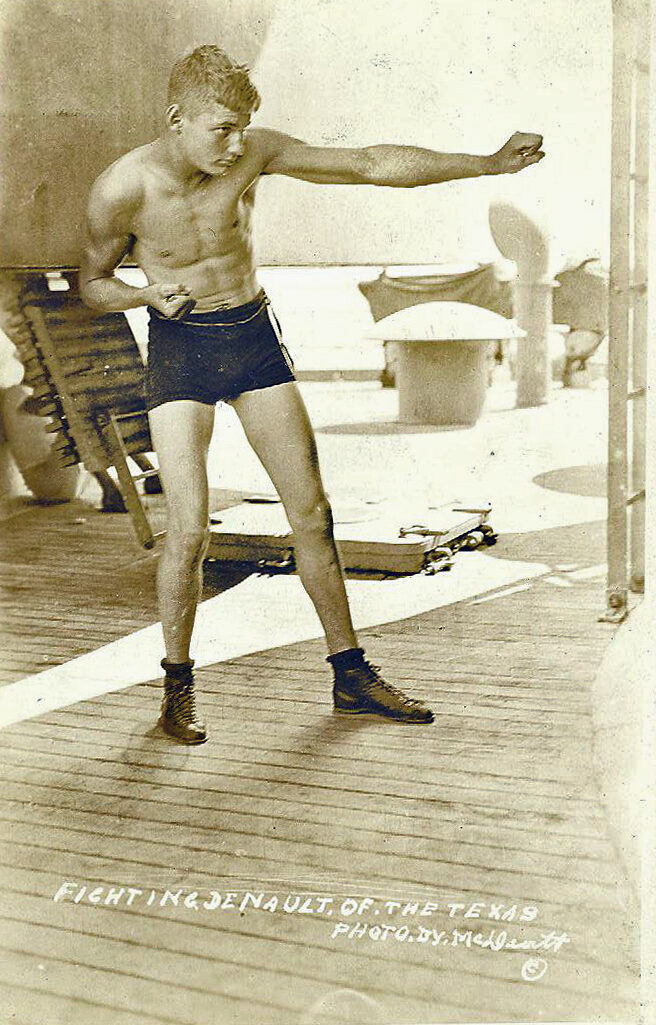
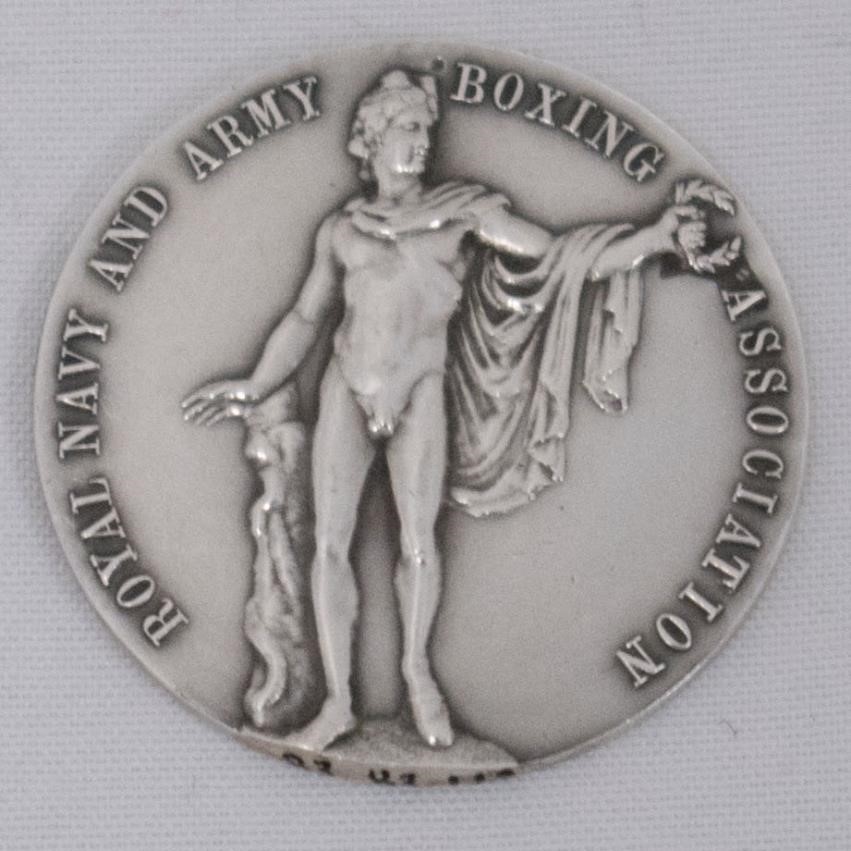
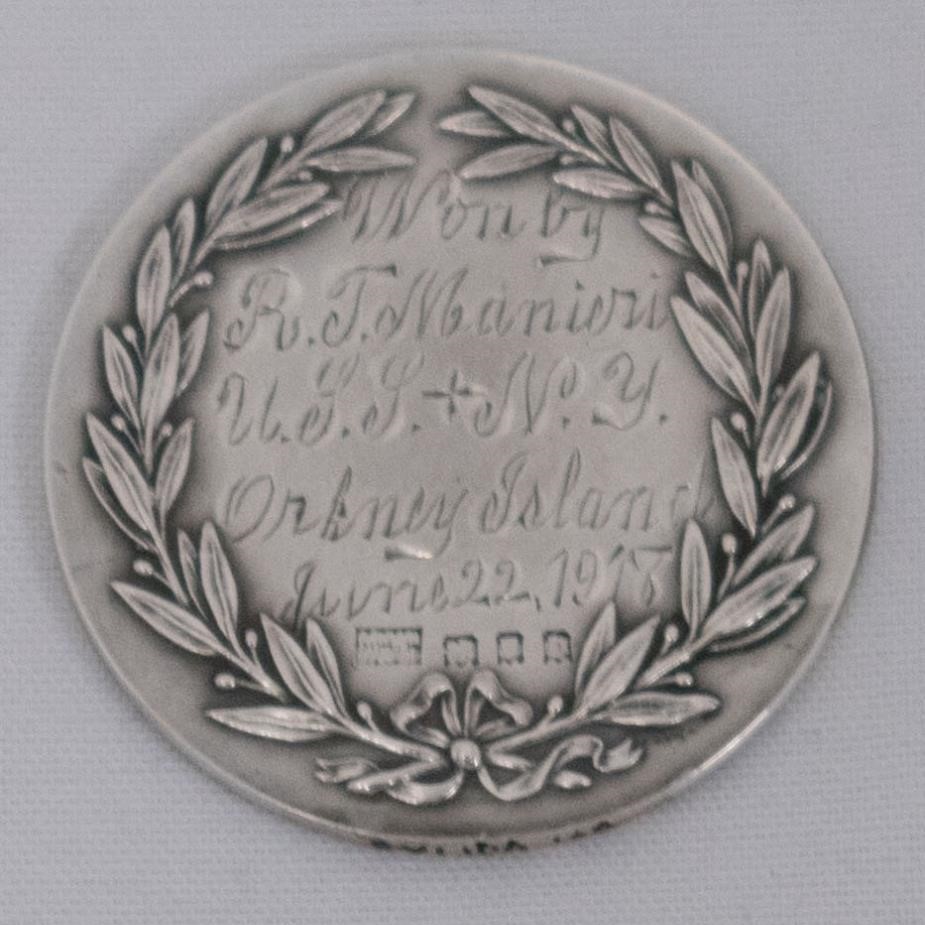
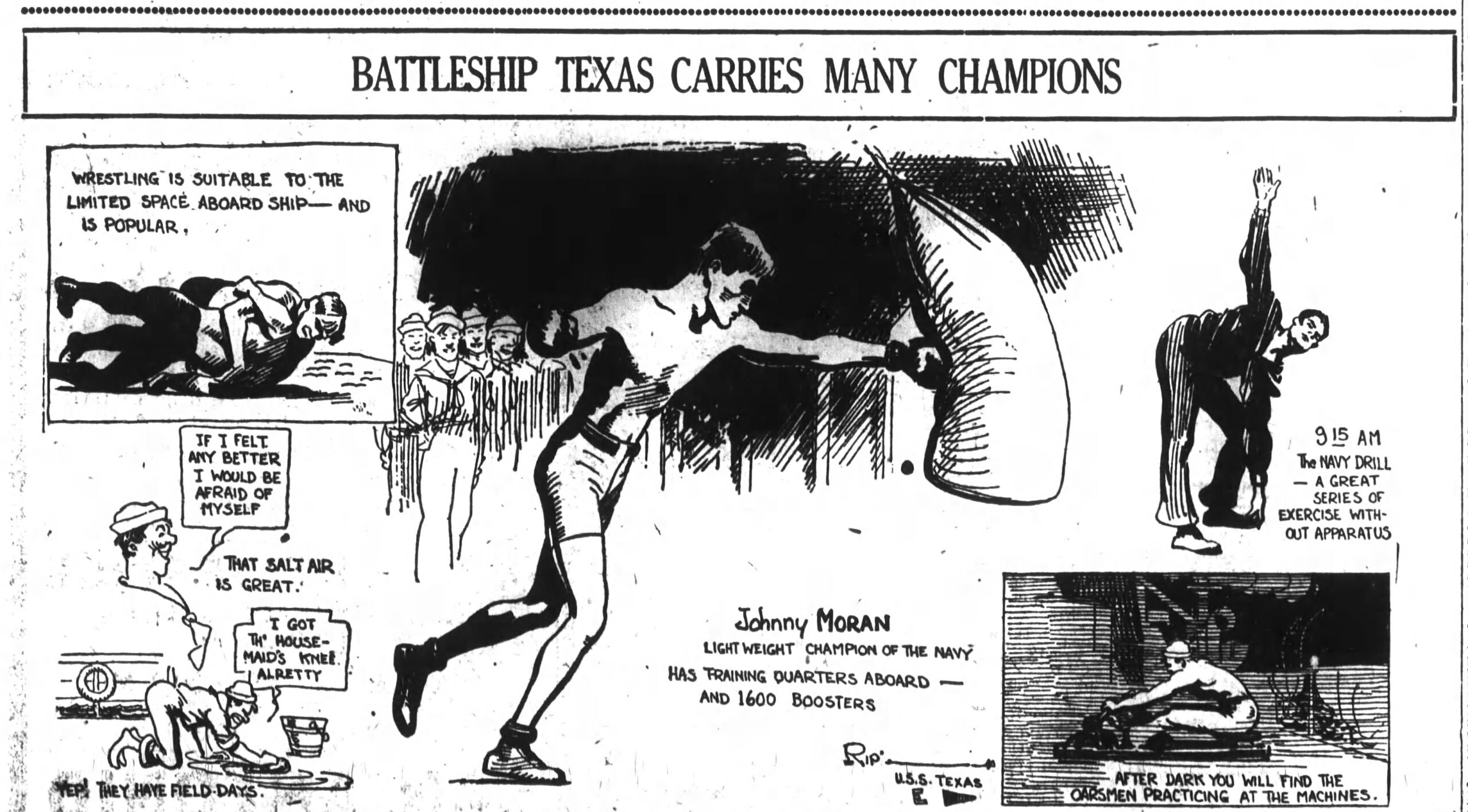
In the Interwar Era, 1919 – 1940, Battleship Texas’s crew claimed many fleet champion and All-Navy titles. Mess Attendant 1st Class Nemesio “Nemo” Madayag took home the Scouting Fleet flyweight champion belt in 1928, narrowly missing out on the All-Navy title at Balboa to the Battle Fleet champion, “Poison” Pisons of USS West Virginia. Nemo kept at it boxing well into the 1930s, and his matches were a regular feature of the ship’s newsletter. He even did exhibition matches in ports all around the country, often with Seaman 1st Class “Red” Deaton.

”Nemo” believes in the personal touch and in all his bouts the personal hypnotism that he waves with either hand has made him a steady winner. Incidentally some other men in the Texas who aspire to be first class boxers might notice the hard work and fidelity with which Madayag trains all the time and so find the secret of much of his success.The Texas Steer, November 7, 1931
Adolph “Pickles” Hintz was the 1930 & 1932 All-Navy heavyweight champion while serving on USS Idaho, and after completing his Navy service in 1932, briefly went professional. Pickles spent most of 1932 in Australia, where he fought more than 20 professional bouts, winning over 90% of them. After Pickles reenlisted in the Navy in 1933, he served on USS Arkansas and continued boxing both in the Navy and in professional matches as time allowed. Pickles was transferred to USS Texas in May 1934 and won the All-Navy heavyweight champion title a third time in 1935.
A Kansas coal miner who joined the Navy, saw the world, and became heavyweight champion of your Uncle Samuel’s naval forces–that’s “Pickles” Hintz, pride of the U. S. S. Texas, who meets fighting “Butch” Rogers, heavyweight champion of your Uncle Samuel’s land forces, Tuesday night at the Olympic Auditorium … It will be a battle between a lethal left, owned by “Pickles,” and a crushing right, operated by the soldier.Los Angeles Evening Citizen News, Saturday, September 7, 1935
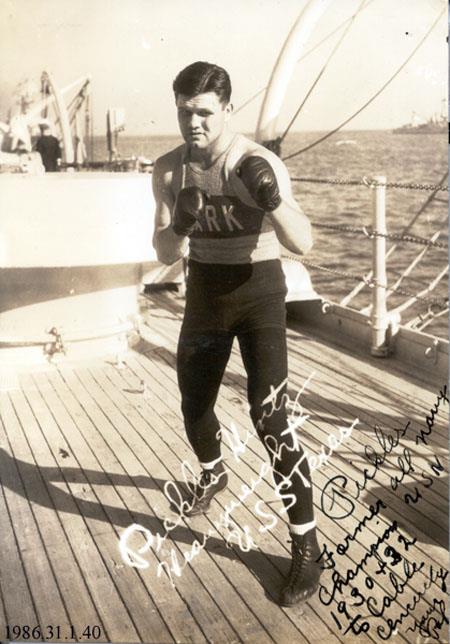
For World War II, we have less information about sports activities on USS Texas. The Navy removed most of the ship’s printing equipment in early 1942, which heavily curtailed the ship’s newsletter, and it was no longer easy to produce large numbers of programs onboard for events. We know these events were still happening, but the lack of documentation makes details sparse. Though in July 1945, a handful of men from USS Texas talked with the newsletter staff on USS New Mexico, who offered to let them use New Mexico’s printing press to produce a real newsletter for the USS Texas crew. In that lone edition of the ”Texas Longhorn”, one full page was dedicated to sports. And the biggest story – boxing. The Texas boxing team had competed previously in Pearl Harbor in January 1945, then had to pause for the Battles of Iwo Jima and Okinawa. They lost a close decision to the USS Mississippi team in their first match back, but they were training for a rematch and had their sights set on winning the Pacific area battleship division title.
One of the sailors shown in the July 1945 boxing team photo is Steward’s Mate 2nd Class Aubrey Pollard, from McGregor, Texas. While we see him here, a Black boxer being recognized in the USS Texas newsletter alongside White boxers, this boxing team would have been illegal in his home state of Texas. Racial segregation in sports was required by Texas law until 1954. During USS Texas’s service, from 1914 to 1948, boxing in the civilian world was no exception to the segregationist attitudes, rules, and laws of the Jim Crow era. There was no nationwide law or rule segregating boxing, so it varied from state to state and even within states. Some states banned mixed-race boxing altogether, while in others, individual cities or professional boxing associations enforced their own bans. Promoters might be unwilling to facilitate a mixed-race fight, even if it were perfectly legal. In some regions, it could be difficult or outright illegal for boxers of different races to simply train in the same gyms. The United States Supreme Court did not overturn laws mandating racial segregation in sports until 1959.
However, boxing may have been more open and integrated within the Navy at the time. We have no evidence to date of any mixed-race teams in team sports on USS Texas, such as baseball, football, or basketball. Despite that, we have photographic evidence of racially integrated boxing teams on USS Texas in the 1930s and 1940s. Shipboard newsletters and smoker programs from the 1910s, 20s, and 30s also feature integrated boxing teams and mixed-race boxing matches. While Filipino and Black sailors still faced many challenges in the Navy, boxing may have served as a place where at least some of the barriers of the era broke down.

